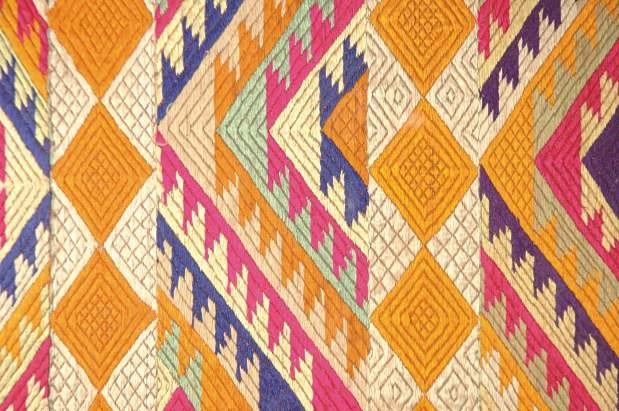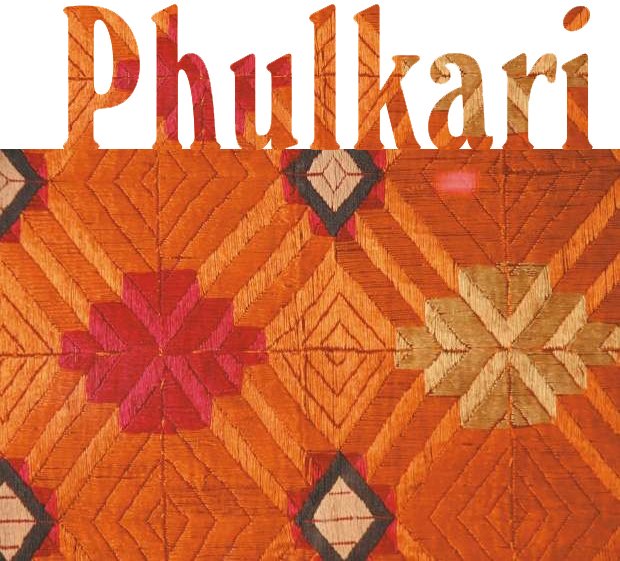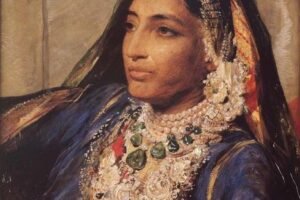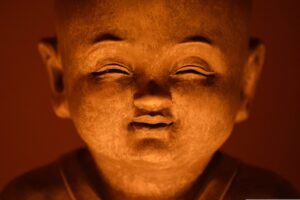An Art Empowering the Eve
The finest and vibrant folk art of Punjab, is an art of the ladies, by the ladies and for the ladies.
Phulkari, the traditional folk art of the Punjabis, is struggling to survive in their fast changing lifestyle. The need of the hour is to preserve it at all costs, even if some innovations are to be done to its traditional form. Phulkari desperately needs re-invigoration.
Phulkari is one of the most fascinating and vibrant expressions of the Punjabi folk. It is a difficult art and demands a lot of time and patience. It is, therefore, not surprising that in the present day mechanical life, this beautiful, rich and great cultural heritage of the Punjabis is increasingly getting eroded.
Moreover, Phulkari is basically a domestic art, entirely pursued by women for their personal use. Thus, it is in reality an art of the ladies, by the ladies and for the ladies.
The folk songs of Punjab are full of references to Phulkari. There is a mention of Phulkari in the Vedas and in the ancient epic of the Mahabharata. Even Guru Nanak refers to the stitched embroidery in the following words:
Kadd kaseeda pehreh choli taan tum janau naari (1171)
(Only when you can embroider your choli (blouse), will you be accepted as a woman)
It was, however, during the rule of Maharaja Ranjit Singh, that lasted from 1799 till 1839, that the Punjabis enjoyed peace and prosperity. It was then that Fine Art, Architecture, Music, and various Folk Arts prospered as never before.
Khadi Origins
The village women started embellishing their Odhinis or Dupattas (Headwear/Shawl) with embroidery. They would spin yarn on Charkha (Spinning wheel) and the village Julaha (weaver) would weave the yarn into cloth, which was dyed by the village Rang-Rez (dyer). Thus, the coarse, but strong and long lasting Khaddar (hand-spun khadi) was easily and cheaply available in the village itself. With a small needle and Pat (Floss silken thread from China or Afghanistan) of various colors, purchased from traveling peddlers, who frequented the villages, the ladies would embroider their Odhinis.
They used darn stitch, the simplest of stitches, which by nature goes straight, for the embroidery. These embroidered Odhinis were called Phulkaris, which literally meant ‘flower work’ or ‘flower crafting’ and symbolized Punjabi character and psyche explicitly. The Punjabi is strong, rough and a little coarse like the Khaddar of Phulkari, but at the same time quite simple and straightforward as the darn stitch, very soft-hearted and colorful like the Pat, with which Phulkari is embroidered. Punjab, therefore, is justly proud of its finest art, the incarnation of the spirit of Punjab, through the vividness of colorful sensibilities.
Embroidered Odhinis are called Phulkaris, which literally mean ‘flower work’ or ‘flower crafting’ and symbolize Punjabi character and psyche explicitly.
Beauteous Baghs
Initially, only a few floral or geometrical designs were embroidered, but with the passage of time, ladies started covering more and more area of the base cloth. Whereas, the simple and sparsely embroidered Odhinis meant for everyday use are called Phulkaris, the closely and all-over covered ones, made for and used on special ceremonial occasions are known as Baghs (Gardens). In Phulkari, the embroidery adorns the cloth, whereas in a Bagh, it covers every inch of the ground, so much so that the base cloth is not at all visible. Thus the difference between Phulkari and Bagh is only quantitative and not qualitative.
Signs, symbols and motifs are the media to convey the feelings,
e.g. divine knowledge cannot be expressed properly in words or through vocabulary and has thus been rightly called the Akath Katha (which cannot be said or expressed in words)

This spectacular style of embroidery used to be an essential part of everyday life. Almost every ceremony in which women participated was given a touch of additional color and richness by the use of Phulkari. Traditionally, it became an integral part of the bridal trousseau and for joyous occasions. Even covering the dead body of a woman, to be lifted on a bier by her sons, covered with a red Phulkari, symbolized a happy end of a life of fulfillment and prosperity.
There were no pattern books or diagrams from which the designs could be copied. These were learnt the hard way by the young girls from their grandmothers, mothers and other elderly relatives and friends. The elders, too, had no formal art training, but these illiterate ladies had a marvelous gift of nature and instinctively picked up this art. Whatever they experienced emotions. But the old signs and symbols have to be given new meanings in the context of the vastly changed circumstances.
Traditional Craft in the Present Scenario
Change is the law of Nature. Darn stitched Phulkari on Khaddar embroidered with Pat can make way for a better type of base cloth or thread or colors that are routinely used. And the quality of cloth will determine whether embroidery has to be done from the wrong side or the right side. In fact, we should look for an adjustment between the bygone era and the present technological world. The contemporary embroiders should address themselves to the present day life and its social problems. Let their feelings, emotions, hopes and fears find expression through the depiction of cars, airplanes, telephones, mobiles, TVs, computers and other latest household gadgets, as also games like cricket, hockey, tennis or soccer. Modern toys and means of entertainments in Appu-Ghars and Disneylands, even the scenes from the epics like the Ramayana, the Mahabharata or from the lives of the Sikh Gurus can serve as the new designs.

In the present scenario, this delicate and rich fine art of Phulkari can turn into a step towards women empowerment. Poor destitute ladies and widows can take up embroidery and earn their livelihood. There are hundreds of designs, which can be further multiplied through intermingling and by using different colors as the craft-persons like according to their innate creative ability. The patterns, so designed can be replicated in bright and vivid colors on sarees, bedcovers and home-furnishing like cushion covers etc.
Thus, this simple traditional art of Punjab can attain new dimensions of vivacity and touch the hearts and the minds of all and sundry.












